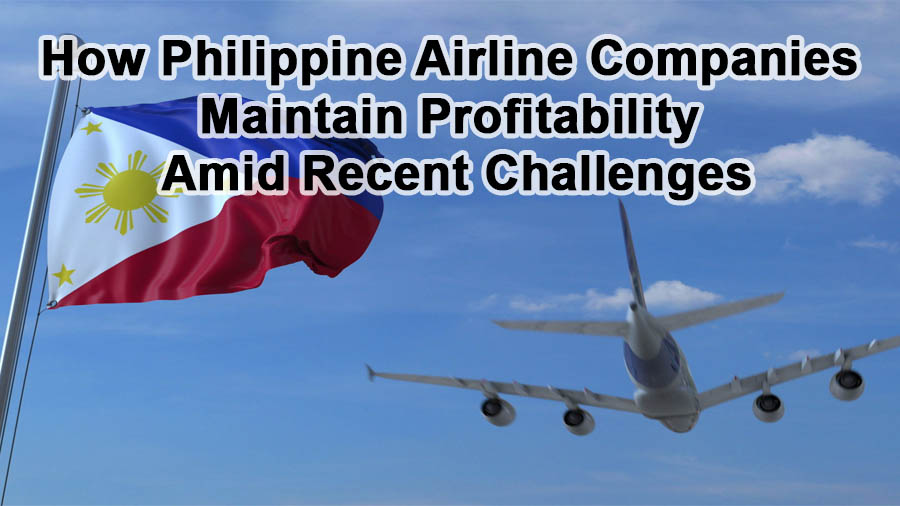How Philippine Airline Companies Maintain Profitability Amid Recent Challenges
The emergence of the COVID-19 pandemic in early 2020 brought about profound and unprecedented changes across the globe. As the virus rapidly spread, nations and international organizations such as the World Health Organization (WHO) faced the monumental task of finding solutions to curb its transmission.
Swift actions were taken, including widespread lockdowns, travel restrictions, and the establishment of health protocols, in a collective effort to slow the virus’s advance. And although these guidelines and restrictions were made to reduce the risk of contracting the virus, the world was not prepared for their sudden implementation.
Effects of COVID-19 on the Aviation Industry
The enforcement of the COVID-19 protocols didn’t only disrupt people’s everyday routines, but it also left a negative impact on some of the world’s biggest industries like aviation. With travel being restricted, or completely banned in some countries, airlines across the globe had lost their primary source of income. This has led to a plethora of problems because aside from having little to no revenue, airlines needed to find ways to reduce operation costs and increase cash flow to keep their business afloat.
As such, many airlines resorted to retiring their old fleets, grounding some of their planes, and lobbying for tax relief and labor subsidies. They also laid off thousands of their employees, as well as offered incentives to staff members who opted for early retirement to encourage more of their workers to retire early. Unfortunately, many airlines failed to keep their business running during the first few years of the pandemic, forcing them to file for bankruptcy or cease their operations.
Challenges Faced by Philippine Carriers
The airline industry struggled during the pandemic, and it seemed like its future was going to be bleak. And many pilots and students who planned to or are taking pilot training in the Philippines began to wonder if they’ll still have flourishing careers in this industry.
However, a few years after COVID-19 was declared a pandemic, airlines witnessed a steady resurgence in their profits. Factors such as the lifting of travel bans, the gradual restoration of international and domestic travel flow, as well as the rise of the “revenge travel” phenomenon played a pivotal role in reigniting the aviation industry. People were looking forward to traveling again and airlines were excited to soar through the sky once more.
Nevertheless, the road to recovery is a long and hard-fought battle, so it could take airlines several years before their business can stabilize. But for airline companies like Philippine Airlines (PAL), Cebu Pacific, and AirAsia Philippines, they’re prepared to face any obstacle they may encounter along the way because they’re optimistic about their profit margins in the coming years.
The Airlines’ Plans
There are several reasons why the Philippines’ airlines survived the first few years of COVID, from their ability to adapt to having good foresight. As such, each airline came up with strategies that kept their business alive during the pandemic and ensure their post-pandemic profit growth.
PAL, for instance, had to downsize its fleet and retrenched a percentage of its staff. The flag carrier also had to return some 20 leased aircraft, reducing its leasing costs by at least USD 1 billion. PAL also plans to restore its international network to increase its number of routes and flight frequencies. Moreover, the airline will grow its cargo business, gaining more profitable opportunities in the air freight market. However, PAL’s biggest strategy was its debt restructuring plan, which slashed the airline’s debts by more than USD 2 billion.
Cebu Pacific, on the other hand, continued to adhere to its low-cost model, so by the time travel restrictions eased, the airline experienced a surge of travelers—both local and foreign—who were looking for affordable airfare. During the first quarter of this year, Cebu Pacific booked around PHP 644.09 million in foreign exchange gains, which was a great bounce back from last year’s PHP 316.97 million loss. For the second quarter of 2023, however, Cebu Pacific plans to add new routes and schedules in its Clark and Cebu hubs while resuming flights in strategic locations like Iloilo to Puerto Princesa, Iloilo to Cagayan de Oro, and Manila to Laoag.
Meanwhile, AirAsia Philippines is establishing a more cost-efficient corporate structure to fully recover from pandemic-related losses in 2023. According to the airline’s Chief Executive Officer, Ricardo P. Isla, AirAsia Philippines’ goals include growing their fleet, increasing flight frequency back to pre-pandemic levels, reactivating hibernated international routes, launching new international routes, and expanding their domestic route network.
Even if the aviation industry was hit hard by the COVID-19 pandemic, many airlines, like the ones in the Philippines, were able to weather the storm and resume their operations post-pandemic. Although their business flow has yet to return to pre-pandemic levels, airlines such as PAL, Cebu Pacific, and AirAsia Philippines have come up with strategic plans to maintain their profitability and keep their planes flying for years to come.


